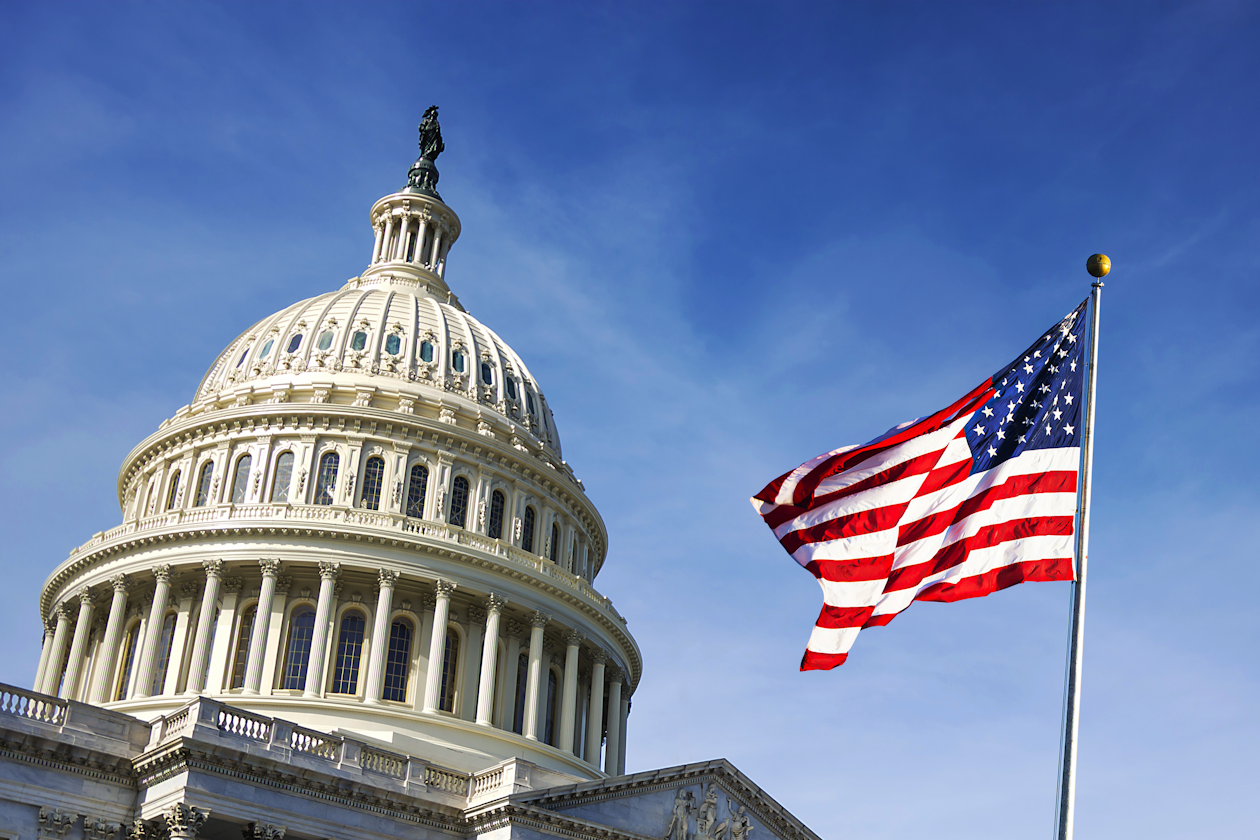The biggest political event of the year is just around the corner.
The outcome of the US presidential and congressional elections on 5 November is important not just for the US, but for economic policy around the world.
At this late stage, the outcome of the US Election is highly uncertain.
According to RealClearPolitics, which measures poll averages, Donald Trump is in the lead, he’s expected to win 48.5% of the vote, while Kamala Harris is set to win 48%.
According to Gallup, the analytics company, the economy ranks as the most important of 22 issues that US registered voters said will influence their choice for president – over half of registered voters rated the economy as extremely important. This is the highest since October 2008.
The last poll for the Financial Times and the University of Michigan Ross School of Business, found that 44% of registered voters trust Trump more to handle the economy versus 43% for Harris.
This article isn’t personal advice. If you’re not sure if a course of action is right for you, ask for financial advice. Investments can fall as well as rise in value so you could get back less than you invest.
Investing in funds isn’t right for everyone. Investors should only invest if the fund’s objectives are aligned with their own, and there’s a specific need for the type of investment being made. Investors should understand the specific risks of a fund before they invest, and make sure any new investment forms part of a diversified portfolio.
As the race to the White House between Trump and Harris draws to a close, make sure you don’t miss out on our latest expert US investment ideas and insights.
Sign up to our weekly Editor’s Choice email to stay up to date on all things US Election.
Trump’s key economic policies
So, why do voters rate Trump so highly on economic management?
His campaign team have laid out 20 core promises to ‘Make America Great Again’. Seven of them are economic.
These include ending inflation to ‘make America affordable again’. Make America the dominant energy producer in the world, end outsourcing, and make the US a ‘manufacturing superpower’.
His campaign is also promoting large tax cuts for workers, rebuilding American cities, keeping the US dollar as the world’s reserve currency, and cancelling President Biden’s electric vehicle mandate and cut ‘burdensome regulations.’
Trump’s main economic policies during this election campaign can be boiled down to three things – economic protectionism, low taxes and prioritising hydrocarbons as the dominant energy source in the US.
The impact of Trump’s tariffs proposals
If Trump wins the election, it could have big ramifications for the global economy.
Firstly, although trade tariffs aren’t listed in his 20 core policies, Trump has proposed significant tariff hikes as part of his presidential campaign.
He’s proposed a 10% universal tariff on all imports, and a 60% tariff on all imports from China.
The impact of these tariffs could be huge.
In 2023, the US imported goods worth $3.1tn. If trade levels stay the same under a hypothetical Trump win, then universal tariffs would add $311bn to US taxes.
In 2023, Chinese imports to the US totaled $421bn – a 60% tariff rate could add more than $250bn to Chinese goods alone.
Of course, if Trump does win a second term as president and imposes these tariffs, then it’s likely that imports would fall.
The Tax Foundation argue that this would reduce long run GDP by 0.8%. They argue that tariffs would also cost jobs and hit income tax revenues.
Free trade is generally considered good for economic growth, and it helps to keep inflation under control.
Historically, tariffs lead to stronger rates of inflation since they reduce the quantities of goods and services available to the public.
An International Monetary Fund (IMF) paper from 2019, also found that tariffs can have negative economic consequences. It found that ‘higher tariffs seem to have lower output and productivity, while raising unemployment and inequality.’
If Trump does win this election, he’ll need to be careful about the impact of tariffs on the domestic economy.
Trump’s energy policy has already been achieved
Trump’s energy policy is interesting.
The US is already the world’s largest oil producer. In 2023, it produced 21.91 million barrels of oil a day, which was 22% of the world’s total. The second largest producer was Saudi Arabia, who produced 11% of the world’s total.
The US is the world’s dominant energy producer, and the economy has already achieved Trump’s energy goals under the Biden administration.

Kamala Harris’s key economic policies
Kamala Harris might have published an 82-page document on her economic policies, called ‘A new way forward for the Middle Class’, however, voters appear to trust Trump more with the economy.
The FT/ University of Michigan poll also shows that Trump is considered the candidate that would leave more voters better off financially.
Some 45% of registered voters think that they will be better off financially under Donald Trump, with only 37% saying the same for Kamala Harris.
This is interesting because US GDP is currently growing at the fastest rate in the G10, by some distance. The US economy created 223,000 jobs in September, the unemployment rate is 4.1%, and average hourly earnings growth is expanding at a 4% annual rate.
Kamala Harris has been vice president of the US during a period of economic prosperity for the US, yet Donald Trump is viewed by registered voters as better for the economy.
The key pillars of Harris’ economic policies include lowering costs by investing in renewable energy. She also plans to invest in small businesses and entrepreneurs, including small manufacturers, high-tech startups and neighborhood shops.
Another pillar of her economic policy is to create an ‘America Forward’ strategy that’s designed to jumpstart investment in American industry and manufacturing.
Harris has pledged to make the US tax code fairer, while at the same time encouraging innovation and investment. She’s also pledged to implement a minimum income tax on US billionaires.
Harris might not be averse to Tariffs
Her economic policies stand in stark contrast to Donald Trump, however, on one key economic policy, she has failed to flesh out her strategy – tariffs.
While her silence might suggest that Harris is less inclined to increase tariff rates if she were to win the presidency, her record on tariffs as vice president is mixed.
The Biden/ Harris administration didn’t reverse the tariffs that were implemented during the first Trump presidency.
The Tax Foundation report that as of March 2024, the trade war tariffs have generated more than $233bn. About 62% have been collected under the Biden administration, the vast majority from Chinese imports.
Congressional race – too close to call
The impact of this election will not only depend on the US presidential race, but also the Congressional race.
All 435 seats in the US House of Representatives are up for election.
Pollster FiveThirtyEight, produces a poll on the generic Congressional ballot, based on polls that ask people which party they support in an election.
At this late stage, the Democrats have a slim lead when it comes to winning Congress at 46.2%, versus 46% for the Republicans. Not only is the presidential race a coin toss, but so too is the Congressional election.
If the polls are correct, and Trump wins the presidency and the Democrats win Congress, then it could blunt the impact of some of Trump’s economic policies.
The US political system of cheques and balances, means that some of his policies might get voted down by a Democratic Congress.
However, with the polls too close to call, there’s a huge amount of uncertainty around this election.
This clouds the economic impact. But once the results of the presidential and Congressional elections are known, we should get a clearer idea about what these mean for the US economy and stock market.
Kathleen Brooks is Founder of Minerva Analysis, a market analysis company. Hargreaves Lansdown may not share the views of the author.
The US makes up over half of the global stock market. It’s the world’s biggest economy and home to some of the globe’s largest companies.
The HL US Fund provides a way to invest in this powerhouse where the hard work is done for you. HL’s experts have handpicked an external team of fund managers, who pick US stocks they believe offer the best potential for long-term performance.
The HL US Fund is managed by Hargreaves Lansdown Fund Managers Ltd, part of the HL Group.





